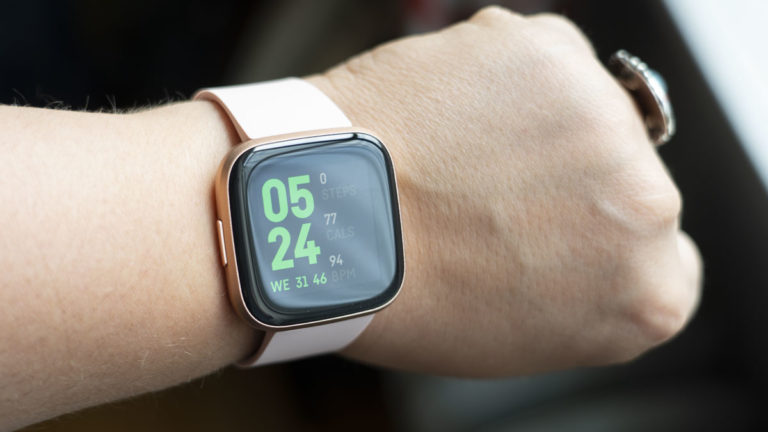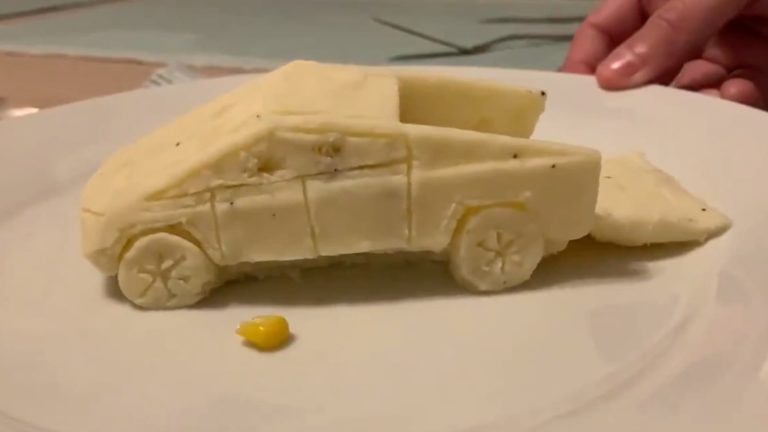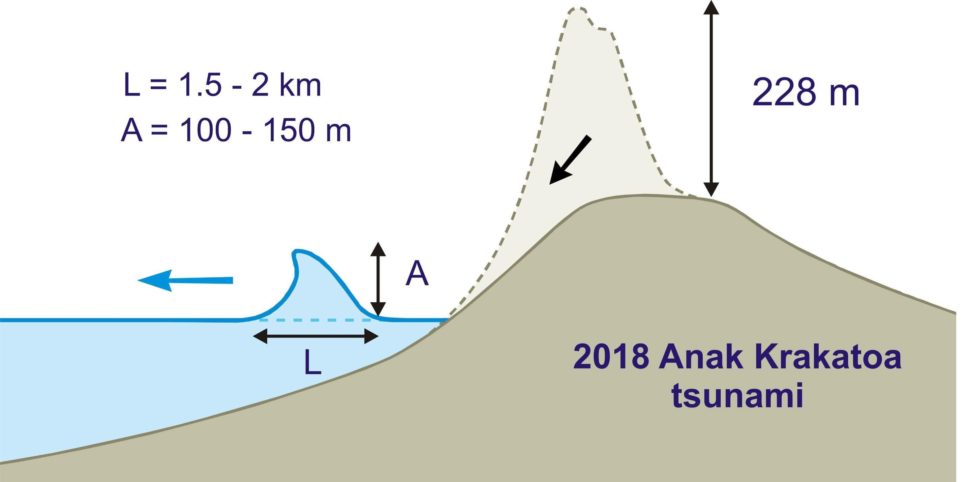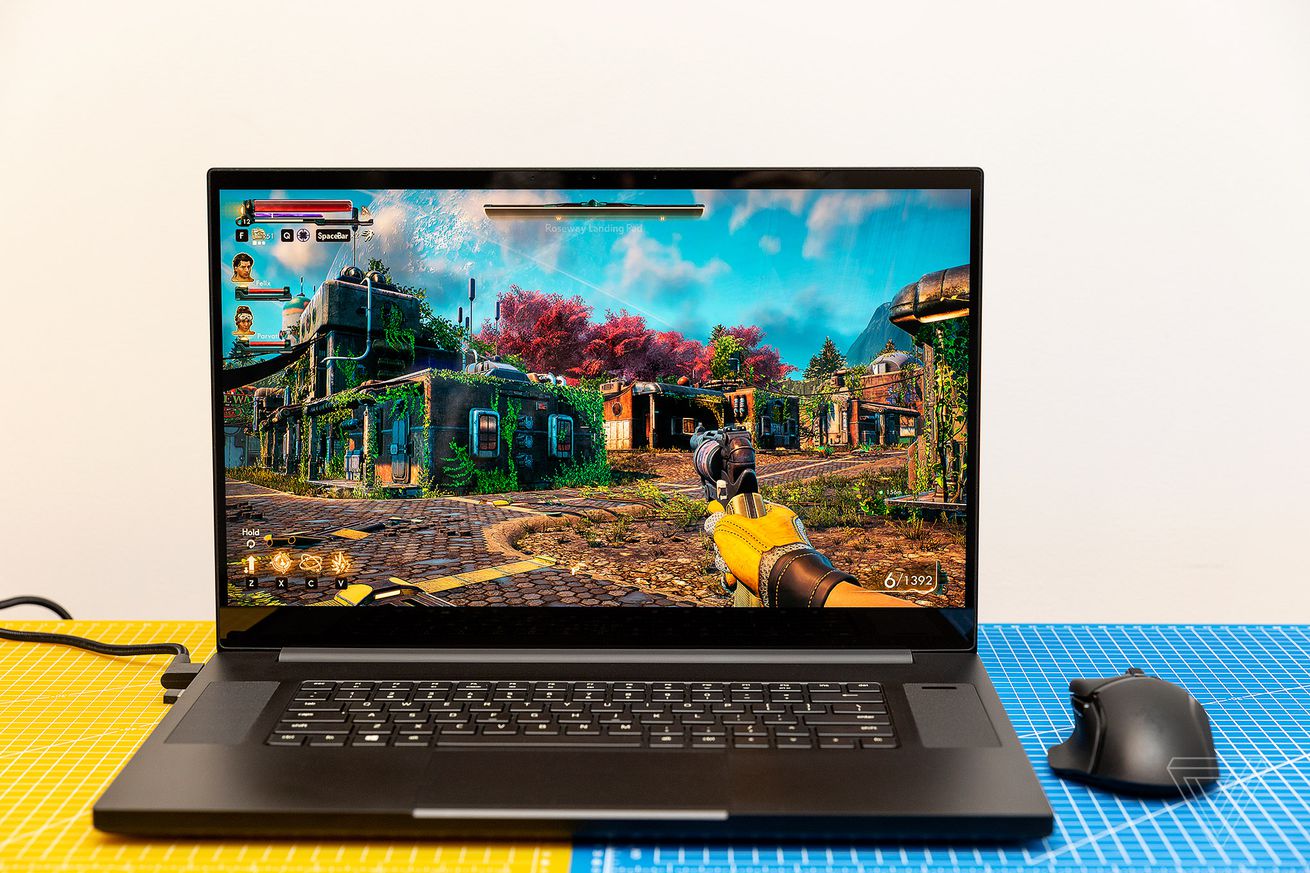Gizmodo Brasil |
- Cientistas recriam raios vulcânicos explodindo cinzas de um canhão
- Relógios e pulseiras inteligentes que valem a pena comprar além do Fitbit
- Artista recria o novo Cybertruck da Tesla com purê de batata
- Erupção vulcânica na Indonésia em 2018 gerou um tsunami com pelo menos 100 metros de altura
| Cientistas recriam raios vulcânicos explodindo cinzas de um canhão Posted: 01 Dec 2019 12:33 PM PST  Não há nada na Terra como um raio vulcânico. Testemunhar torres caóticas de cinzas emergindo de uma convulsão explosiva no ápice de uma montanha já é de cair o queixo. O surgimento de adagas purpúreas de luz saindo dessa coluna, no entanto, eleva o fenômeno a algo mais sobrenatural. Naturalmente, os cientistas querem saber como os raios vulcânicos são produzidos. Embora se saiba que a colisão de partículas de cinzas na pluma desempenha um papel fundamental, as complexidades desse fenômeno provaram ser um tanto evasivas. Diante disso, os cientistas resolveram o problema com suas próprias mãos: eles estão criando explosões vulcânicas em laboratórios para produzir os próprios raios. O mais recente desses experimentos é sem dúvida o mais realista. Em um estudo publicado na revista Geophysical Research Letters, os cientistas relatam como sua sonda pode ajustar as propriedades de uma pluma vulcânica, revelando como a mudança de temperatura ou a umidade da cinza pode causar ou quebrar sua capacidade de gerar raios. As cinzas secas parecem ser uma maneira especialmente boa de fazer com que sua erupção assuma o estrondoso show de luzes de Thor. Este trabalho é mais do que apenas solucionar uma questão científica. O relâmpago vulcânico está emergindo como uma das principais formas de detectar de longe as erupções vulcânicas ricas em cinzas. Quanto mais soubermos sobre como ela funciona, mais precisamente poderemos identificar o tipo de erupção muito antes que os especialistas a vejam – o que pode ser de grande ajuda para aviões vulneráveis que voam nas proximidades ou para comunidades na direção do vento. Sönke Stern, pesquisador de raios vulcânicos da Universidade Ludwig Maximilian de Munique e principal autor do estudo, está ciente disso, mas ele expressa seu entusiasmo pela ciência de maneira um pouco diferente. “Para ser sincero, explodir pedras diariamente é algo bastante divertido, com certeza”, disse ele ao Gizmodo. Relâmpagos vulcânicos têm um princípio-chave em comum com relâmpagos em nuvens regulares: você precisa de uma separação de cargas positivas e negativas. Quando essa segregação se torna demais para a física suportar, um raio aparece, cortando o ar isolante e neutralizando a diferença de carga. Os ingredientes das plumas de erupção são diferentes dos das nuvens clássicas. Aqui, as cinzas são dominantes e “temos quase certeza de que colisões de partículas criam eletrificação” , disse ao Gizmodo Alexa Van Eaton, vulcanologista experimental do Observatório de Vulcões em Cascatas do US Geological Survey. A ação das cinzas, semelhante a um carro de choque, envolve bastante atrito, o que gera cargas elétricas. Esse processo, conhecido como triboeletricidade, também ocorre quando você esfrega um balão na cabeça e ele fica magicamente grudado. Os cientistas também pensam que a destruição de detritos vulcânicos na pluma ajuda a acumular carga elétrica. Parte desse conhecimento foi obtida de observações cuidadosas de raios vulcânicos. “O trabalho de campo é importante, pois fornece os cenários da vida real totalmente dimensionados que estamos tentando explicar”, disse ao Gizmodo Cassandra Smith, bolsista de pós-doutorado da National Science Foundation no Observatório do Vulcão do Alasca do US Geological Survey. Inconvenientemente, “você não tem controle sobre o que o vulcão decide fazer”, disse Smith, e é difícil estudar as influências individuais dos raios vulcânicos no mundo real. É simplesmente muito difícil investigar como um raio é produzido ou quais condições ambientais podem aumentá-lo ou reduzi-lo quando ele é oculto por um turbilhão colossal e superaquecido de cinza. É aí que os experimentos de laboratório entram em cena. Não existem muitas instituições científicas capazes de produzir explosões vulcânicas realistas o suficiente e gerar raios; a Universidade Ludwig Maximilian de Munique é uma das poucas. Muitos experimentos com raios foram realizados por Corrado Cimarelli, um vulcanologista experimental que é coautor do novo artigo. Para seus experimentos mais recentes, eles usaram uma configuração conhecida como bomba de fragmentação: uma câmara de gás argônio pressurizado contendo cinzas que, em um determinado ponto de ruptura de alta pressão, descompacta explosivamente e se propaga em um tanque coletor de aço alto. Isso libera as cinzas como um jato em expansão, no qual nasce um raio vulcânico. Fundamentalmente, o teor de água das cinzas pode variar. Graças a um forno, a temperatura também pode chegar a 608 ° Fahrenheit. As cinzas em si eram o ponto principal, retiradas dos restos de uma erupção de 13.000 anos do vulcão Laacher See, na Alemanha, adormecido. Eles tiveram contato com quase 300 kg do material através de uma empresa que administra pedreiras na região do vulcão. A equipe de Stern descobriu que, à temperatura ambiente, havia menos descargas de raios, porém maiores. Em temperaturas mais altas, as descargas eram menores, mas mais abundantes. Embora esse efeito possa estar relacionado à influência da temperatura sobre a turbulência em uma nuvem de cinzas, não está claro o que está acontecendo aqui. “Isso é algo que não podemos entender completamente com esse tipo de experimento”, disse Stern. O efeito da água foi muito mais pronunciado. Mesmo com apenas uma leve redução das cinzas, a equipe testemunhou uma diminuição na eletrificação geral da pluma em uma ordem de magnitude. Em uma certa nebulosidade, não há essencialmente um raio presente – mas por quê? Acontece que o vapor de água se expande ainda mais dramaticamente do que o gás argônio após a liberação. Isso cria uma explosão mais potente, ampliando o jato de cinzas e jogando as partículas de cinzas por todo o lugar. Com menos colisões entre as partículas de cinza no geral, é menos provável que você produza raios. Por outro lado, detonações de cinzas secas produziam jatos mais focados, apresentando mais colisões geradoras de carga e mais raios. No mundo real, existem algumas evidências de trabalho de campo que sugerem que nuvens de cinza especialmente úmidas geram menos raios. Não está claro por que, mas vale a pena notar que adicionar água ao magma quente aumenta a explosividade da erupção. Isso não é exatamente o que acontece durante os experimentos, mas talvez isso também leve a menos colisões de partículas de cinza. Por outro lado, as cinzas mais secas são inerentemente melhores na geração de eletricidade. É um condutor elétrico muito ruim, explicou Stern, de modo que, à medida que as partículas de cinza se separam, é provável que elas mantenham suas cargas, criando grandes separações de carga que só podem desaparecer por meio de raios. As pistas que esses experimentos revelaram são muito úteis para entender como os raios vulcânicos são forjados, disse Smith. Mas ela enfatizou que continua sendo difícil isolar processos individuais, mesmo aqui. A mudança no teor de água sempre muda o estilo do jato de cinzas, o que significa que é impossível separar os dois fatores e dizer qual é o maior responsável pela extinção dos raios. Este experimento apenas analisa a parte inferior, mais quente e rica em cinzas da pluma de erupção. Se as plumas são flutuantes o suficiente, elas atingem altitudes que são de baixa pressão e decididamente frígidas. Aqui, acredita-se que gotículas de gelo tenham um grande papel na geração de raios. “Esse é um domínio completamente novo para estudos de eletrificação vulcânica que nunca foram abordados ainda”, disse Van Eaton, que chama essas alturas de “oeste selvagem” dos raios vulcânicos. Em outras palavras, as coisas são mais complicadas do que essas experiências podem mostrar. “Adoraríamos uma história simples, mas nem sempre é assim quando se trata de erupções naturais”, disse Van Eaton. Ainda assim, esses experimentos, mesmo com suas limitações, contribuem significativamente para um empreendimento que pode salvar vidas. Van Eaton foi coautor de um estudo demonstrando como a Rede Mundial de Localização de Raios pode ser usada para rastrear o desenvolvimento de raios e erupções vulcânicas em locais remotos. As erupções nem sempre produzem cinzas, mas parecem não produzir raios sem ela, explicou. Além de satélites, cuja vista pode ser obscurecida por nuvens, nenhum outro método de monitoramento que localiza erupções vulcânicas de longe, exceto detecção de relâmpago – pode dizer algo sobre o teor de cinzas em uma erupção. As cinzas podem derrubar aviões, sufocar assentamentos, poluir cursos d’água e prejudicar a saúde humana, portanto, saber que está presente antes que possamos ver fisicamente já é uma grande ajuda. E quanto mais entendermos o estilo de um raio que combina com que tipo de pluma de cinzas, melhor podemos mitigar seus perigos. Por outro lado, talvez os vulcanologistas estejam apenas nisso pelo espetáculo. É difícil não se surpreender, disse Van Eaton, quando as descargas elétricas disparam de uma nuvem já linda e alucinante. Quem não gostaria de pesquisar isso? The post Cientistas recriam raios vulcânicos explodindo cinzas de um canhão appeared first on Gizmodo Brasil. |
| Relógios e pulseiras inteligentes que valem a pena comprar além do Fitbit Posted: 01 Dec 2019 09:51 AM PST  Desde que o Google comprou a Fitbit, as pessoas parecem ter caído em uma de duas categorias: aqueles que não se importam com as implicações de privacidade e os que realmente se importam. Para este último grupo, isso significa que esta temporada de festas é uma boa oportunidade para comprar um smartwatch ou rastreador substituto. Mas qual deles? Embora o Gizmodo tenha um ótimo guia de compras (com curadoria minha), ele apresenta os Fitbits em muitas das categorias. Porque vamos ser sinceros, deixando de lado as preocupações com a privacidade, a Fitbit sabe o que está fazendo quando se trata de hardware. Seu software também é super simples e fácil de usar para rastreamento geral. Só que, embora Fitbits seja o termo abreviado que as pessoas usam para descrever essa categoria de gadgets, eles não são tudo. Um breve comentário aqui: não há muita clareza sobre privacidade quando se trata de seus dados de saúde. Todas essas empresas publicaram suas próprias políticas de privacidade, mas muitas também são cúmplices em programas corporativos de bem-estar com empregadores e seguradoras. Usar um rastreador ou SmartWatch para monitorar sua saúde vai exigir que você, pelo menos, reconheça que a sua informação – embora agregada e tornada anônima -será usado para o lucro. É uma troca definitiva, mas somente você pode decidir se, digamos, para ter a conveniência de monitorar sua menstruação pelo pulso vale a pena fornecer esses dados confidenciais a qualquer empresa. Eu escrevi sobre por que é meio hipócrita estar em pé de guerra sobre o Google possuir dados da Fitbit quando a Fitbit já lucra com isso há anos. Dito isto, eu entendo essa preocupação legítima. Além disso, há muitos de nós por aí que são irrevogavelmente viciados neste jogo auto-quantificável e querem alternativas. Muitos leitores comentaram que é por isso que é um bom momento para aderir ao Apple Watch. A Apple fez um bom trabalho de marketing como a única empresa que se preocupa com a sua privacidade. Isso é meio que verdade. A Apple é melhor que a maioria, mas também participa de programas corporativos de bem-estar. E, se você participar dos estudos da empresa, está consentindo em fornecer seus dados a terceiros de algum tipo. No entanto, se você é um usuário do iOS procurando uma experiência com smartwatch, é difícil vencer o Series 5. Sua tela sempre ativa é melhor que a do Fitbit Versa 2, e as recentes atualizações de software do aplicativo Health and Activity aprimoraram a contextualização dos dados na plataforma como um todo. Mas recomendar o Apple Watch também é banal e deixa de fora os milhares de usuários do Android. Além disso, o Apple Watch começa em US$ 400, o que é caro demais, a menos que você esteja disposto a optar por um Series 3 com desconto. Para ficar claro, o Series 3 ainda é um ótimo relógio, mas não vem com a tela mais recente ou recursos ECG (eletrocardiograma). Se você deseja substituir um Versa, o Samsung Galaxy Watch Active2 é uma escolha decente. É repleto de recursos de atividade física e o Tizen OS é melhor que o WearOS do Google. (Além disso, com certeza o objetivo de substituir os Fitbits é ficar longe do Google, então…) Eu tive problemas de precisão quando o testei, mas a Samsung atualizou seu software desde então. Mas o maior concorrente do Fitbit é provavelmente a Garmin. Em termos de dados, você terá métricas muito mais detalhadas e, no início do ano, a Garmin finalmente atualizou sua linha de relógios inteligentes para que não pareça mais tão horrível. O Venu, seu primeiro smartwatch AMOLED, é bastante sofisticado. Enquanto isso, sua linha Vivomove analógica híbrida é simplesmente deslumbrante. Há também as linhas Vivosmart e Vivofit, que servem como rastreadores básicos. Uma observação importante – especialmente se você estiver com orçamento limitado – quase todas essas opções são mais caras que os Fitbits correspondentes. Isso me leva ao mar de rastreadores de atividade física baratos, que desbancaram o domínio da Fitbit nos últimos anos. Embora eu ache que o Fossil Hybrid HR é um sucessor digno da Pebble, muitos fãs da Pebble me informaram que o Amazfit Cor ou Amazfit Bip também preenchem o nicho de rastreadores simples e atraentes que não custam um rim. E seria negligente se não mencionasse o Xiaomi Mi Band 4, que é estupidamente barato por US$ 40 e acompanha basicamente tudo o que o Fitbit Inspire HR faz. Todos esses produtos têm suas peculiaridades individuais. A maioria não tem o aspecto comunitário que o Fitbit possui. Portanto, embora alguns desafios sejam incorporados a eles, como o Garmins, os dispositivos simplesmente não são tão onipresentes. O aplicativo da Fitbit também não fornece as estatísticas mais detalhadas – para não mencionar que agora eles começaram a bloquear dados mais significativos por trás de uma assinatura – mas é um aplicativo bem projetado. Alguns dos outros (especialmente opções dentro do orçamento) ainda estão trabalhando nisso. No entanto, a maioria dos smartwatches que mencionei são tão bons, se não melhores, que o Versa. Quanto aos rastreadores básicos, eles proporcionam uma experiência comparável em relação à precisão – e esse é o ponto, não é? The post Relógios e pulseiras inteligentes que valem a pena comprar além do Fitbit appeared first on Gizmodo Brasil. |
| Artista recria o novo Cybertruck da Tesla com purê de batata Posted: 01 Dec 2019 06:54 AM PST  Parece que as pessoas preferem o design Cybertruck da Tesla quando se trata de uma pilha de purê de batatas em vez de sua versão original. Mais de um milhão de usuários do Twitter assistiram a um vídeo compartilhado pelo produtor do NowThisNews, Dan Milano, mostrando seu irmão – em notável artesão de massa – Greg Milano esculpindo o veículo no jantar de Thanksgiving deste ano.
A façanha também não foi pequena: demorou mais de uma hora para esculpir o novo bebê de Elon Musk, inclusive perfurando alguns buracos em suas "janelas" em uma recriação amena do infame incidente em sua revelação, em que o designer Franz von Holzhausen quebrou o vidro supostamente inquebrável com uma bola de metal.
Com formação em história da arte e da arquitetura, Greg Milano disse ao Buzzfeed News que ele vem se desafiando a criar esculturas de Thanksgiving na última década. "Começou como qualquer outro adolescente com um vulcão e se transformou em uma pirâmide e algumas outras coisas ao longo dos anos. Isso meio que se tornou uma tradição ", disse ele ao Buzzfeed. Seus trabalhos mais complexos, como o Guggenheim em miniatura do ano passado ou sua Casa Branca de batata em homenagem às eleições presidenciais de 2016, podem levar várias horas. Este ano, seu irmão decidiu capturar e compartilhar a compilação em uma série de vídeos no Twitter, até mesmo sua morte definitiva e sufocada pelo molho. Ele também incluiu um link para o Instagram de Greg para que você possa conferir os obras de anos anteriores.
Como o Cybertruck da Tesla parece um grande desastre em termos de combate à crise climática global, talvez Musk possa fazer com que a empresa foque em uma dieta low-carb – nesse caso, emissões de baixo carbono. The post Artista recria o novo Cybertruck da Tesla com purê de batata appeared first on Gizmodo Brasil. |
| Erupção vulcânica na Indonésia em 2018 gerou um tsunami com pelo menos 100 metros de altura Posted: 01 Dec 2019 04:43 AM PST  A erupção de Anak Krakatoa em 2018 produziu um tsunami que, por um curto período, atingiu algo entre 100 a 150 metros de altura, de acordo com uma nova pesquisa. Se a costa da Indonésia estivesse mais próxima do vulcão, esse desastre teria sido muito pior. Quando Anak Krakatoa entrou em erupção em 22 de dezembro de 2018, o evento causou um deslizamento de terra que desencadeou um tsunami perigoso no Estreito de Sunda, na Indonésia. Cerca de uma hora após a erupção, ondas entre 5 e 13 metros de altura atingiram as costas próximas de Java e Sumatra, mergulhando o interior até 330 metros em alguns lugares. O tsunami pegou os moradores completamente desprevenidos, resultando na morte de 427 pessoas. Quanto ao tamanho do tsunami nos momentos imediatamente após o deslizamento de terra, isso tem sido menos claro. Uma pesquisa publicada esta semana na Ocean Engineering está jogando nova luz sobre esse evento raro, mostrando que o tsunami, durante seus primeiros minutos de existência, era absolutamente monumental em tamanho. Simulações em computador do tsunami sugerem que a onda inicial tinha algo entre 100 a 150 metros de altura. A nova pesquisa, liderada por Mohammad Heidarzadeh, professor assistente de engenharia civil da Universidade de Brunel, mostra que o desastre poderia ter sido muito pior se a costa da Indonésia estivesse situada perto do vulcão Anak Krakatoa. Uma onda dessa altura faz muito sentido, considerando a quantidade de material perdido durante a erupção. Fotos de Anak Krakatoa após o deslizamento de terra que se seguiu mostram o vulcão sem um lado inteiro. Algo entre 150 a 170 milhões de metros cúbicos da montanha entraram na água. “Quando materiais vulcânicos caem no mar, eles causam deslocamento da superfície da água”, disse Heidarzadeh em um comunicado à imprensa. "Semelhante a jogar uma pedra em uma banheira – isso causa ondas e desloca a água. No caso de Anak Krakatoa, a altura do deslocamento da água causado pelos materiais do vulcão era superior a 100 [metros]".
Heidarzadeh e seus colegas usaram modelos de computador para simular o tamanho do tsunami. Eles também usaram dados do nível do mar coletados em cinco locais diferentes perto do vulcão para validar as simulações. O melhor modelo apontou para um pico de intensidade que durou cerca de 6 a 9 minutos após a erupção, momento em que o tsunami estava gerando energia igual ao terremoto de magnitude 6,0. O comprimento da onda foi estimado entre 1,5 e 2 quilômetros. A onda dissipou-se rapidamente devido aos efeitos combinados de gravidade e atrito. À medida que a gravidade puxava a maior parte da água para baixo, criava um atrito adicional ao longo do fundo do mar. A onda encolheu consideravelmente, mas ainda causou estragos quando atingiu Java e Sumatra. Dito isto, o tsunami ainda tinha 80 metros de altura quando atingiu uma ilha desabitada a poucos quilômetros de Anak Krakatoa. Se uma massa de terra hipotética existisse a uma distância de cerca de 5 quilômetros do vulcão, teria sido atingida por uma onda com algo entre 50 a 70 metros, de acordo com a pesquisa. No futuro, Heidarzadeh planeja trabalhar com o Instituto de Ciências da Indonésia (LIPI) e a Agência de Avaliação e Aplicação de Tecnologia (BPPT) para desenvolver um novo plano de resposta a tsunamis na região. Anak Krakatoa tem um histórico de infligir desastres. Em 1883, uma erupção gerou um tsunami com cerca de 42 metros de altura quando atingiu a costa, resultando em 36.000 mortes – época em que as áreas costeiras da região eram muito menos povoadas. The post Erupção vulcânica na Indonésia em 2018 gerou um tsunami com pelo menos 100 metros de altura appeared first on Gizmodo Brasil. |
| You are subscribed to email updates from Gizmodo Brasil. To stop receiving these emails, you may unsubscribe now. | Email delivery powered by Google |
| Google, 1600 Amphitheatre Parkway, Mountain View, CA 94043, United States | |
 Diagrama mostrando como o vulcão produz uma onda de tal magnitude. Imagem: Heidarzaheh et al., 2020/Ocean Engineering
Diagrama mostrando como o vulcão produz uma onda de tal magnitude. Imagem: Heidarzaheh et al., 2020/Ocean Engineering Photo by Chris Welch / The Verge
Photo by Chris Welch / The Verge 
 Photo by Amelia Holowaty Krales / The Verge
Photo by Amelia Holowaty Krales / The Verge  Photo by Amelia Holowaty Krales / The Verge
Photo by Amelia Holowaty Krales / The Verge  Photo by Amelia Holowaty Krales / The Verge
Photo by Amelia Holowaty Krales / The Verge  Photo by Vjeran Pavic / The Verge
Photo by Vjeran Pavic / The Verge  Photo by Chris Welch / The Verge
Photo by Chris Welch / The Verge 






















